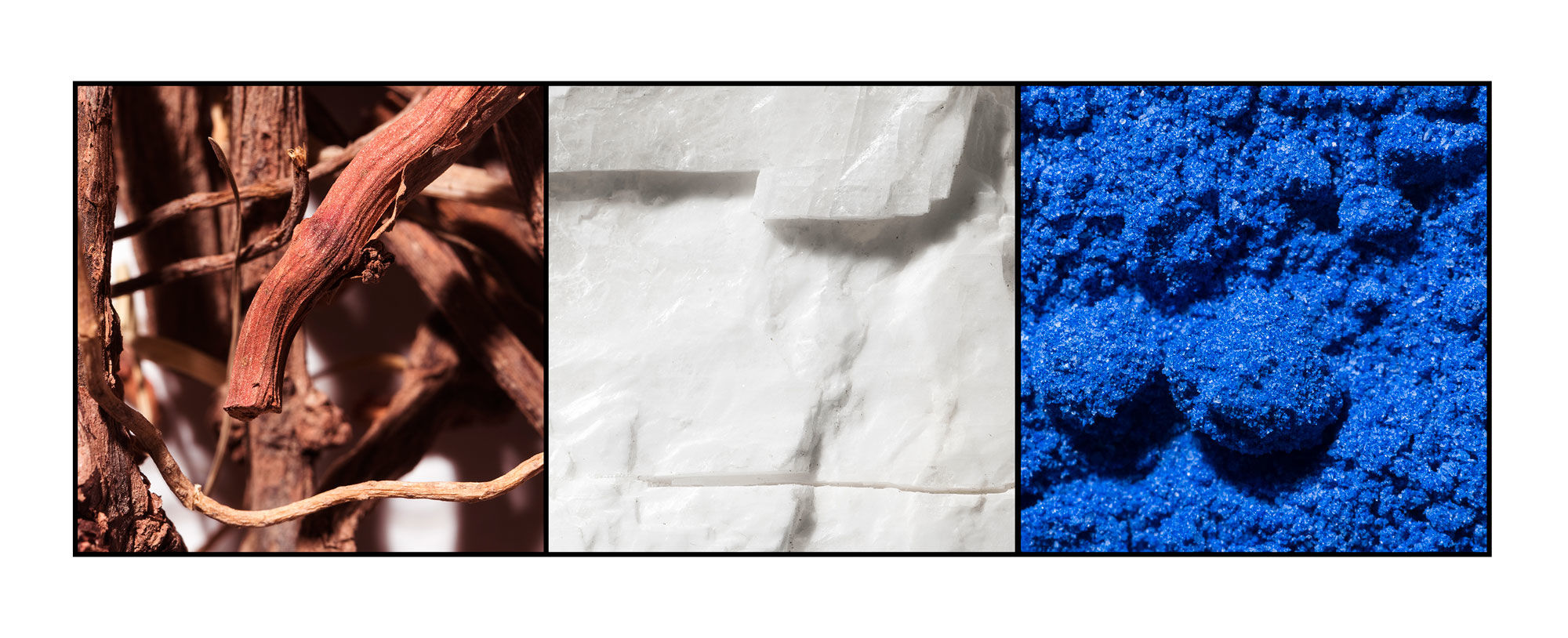17 Mar 19 — 18 Aug 19

Red, White, Blue: Dried madder roots, mineral barite and synthetic ultramarine. Photo: Museum Wiesbaden / Bernd Fickert
Red, white, blue — these are more than simply the colors of the Hessian coat of arms. The cabinet exhibition of the Natural History collections offers examples from the 16th century to the present day of the region’s association with color and colorants. Biebricher Scharlach [red], Frankfurter Schwarz [black] and Kasseler Braun [brown] are colorants that even bear the name of Hessian cities. In the “little blue country” near Nastätten in the Taunus, wool dyed with woad was processed into characteristic blue fabrics. In Darmstadt, Wilhelm Büchner, brother of Georg Büchner, founded a “blue factory” in the 19th century. Around the same time, a minor war was fought in the Odenwald over the barite mining of white pigments. Others recognized the potential of tar chemicals, and one paint factory after the other was founded along the Main and Rhine rivers. With red and violet dyes, they headed into a profitable future. Today, color chemistry has all but disappeared from the region, with the exception of a few specialists – reason enough to bring colors and colorants to the museum and tell their stories.
Hier finden Sie das Begleitprogramm zur Ausstellung, sobald es im Veranstaltungskalender veröffentlich wurde.